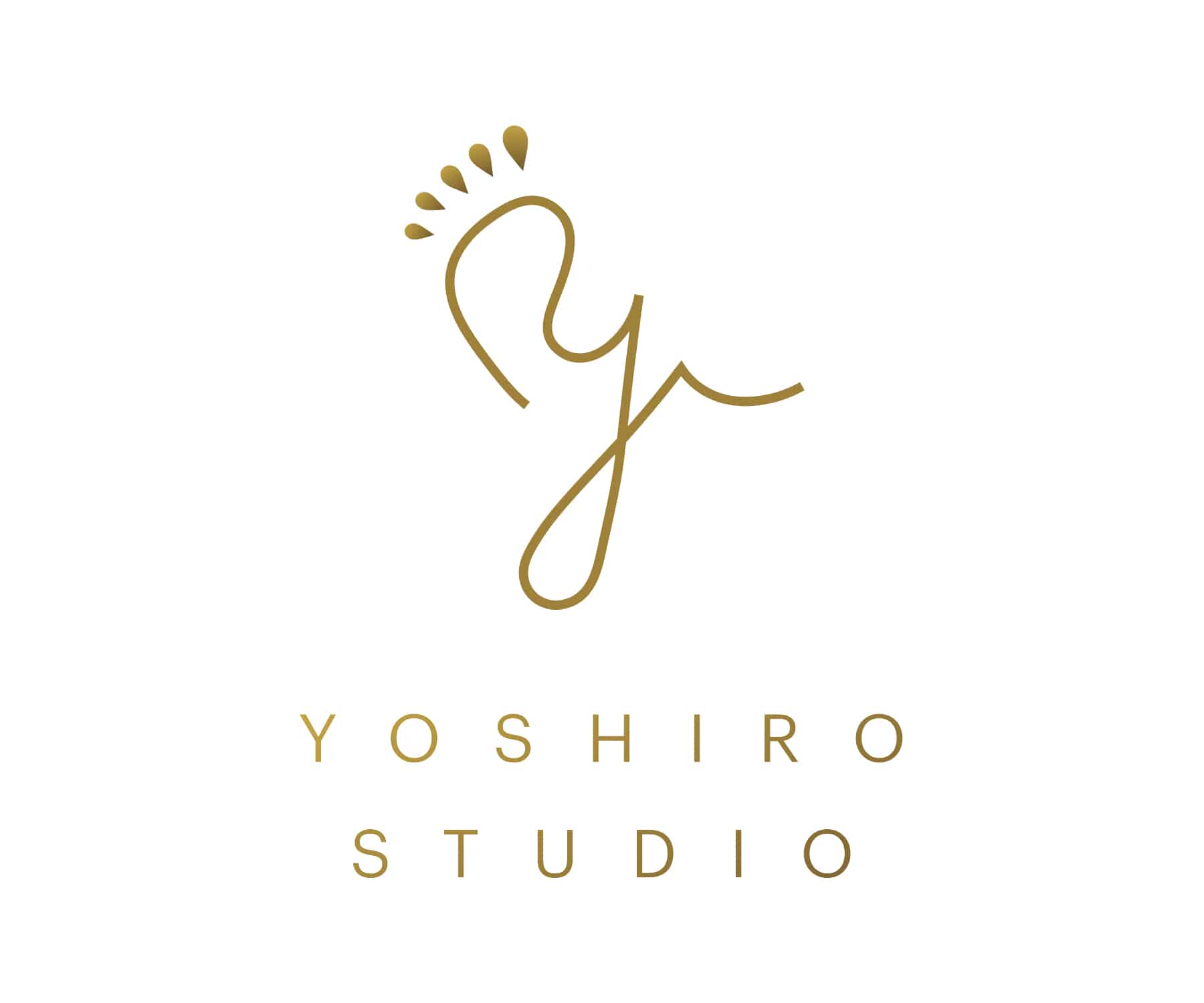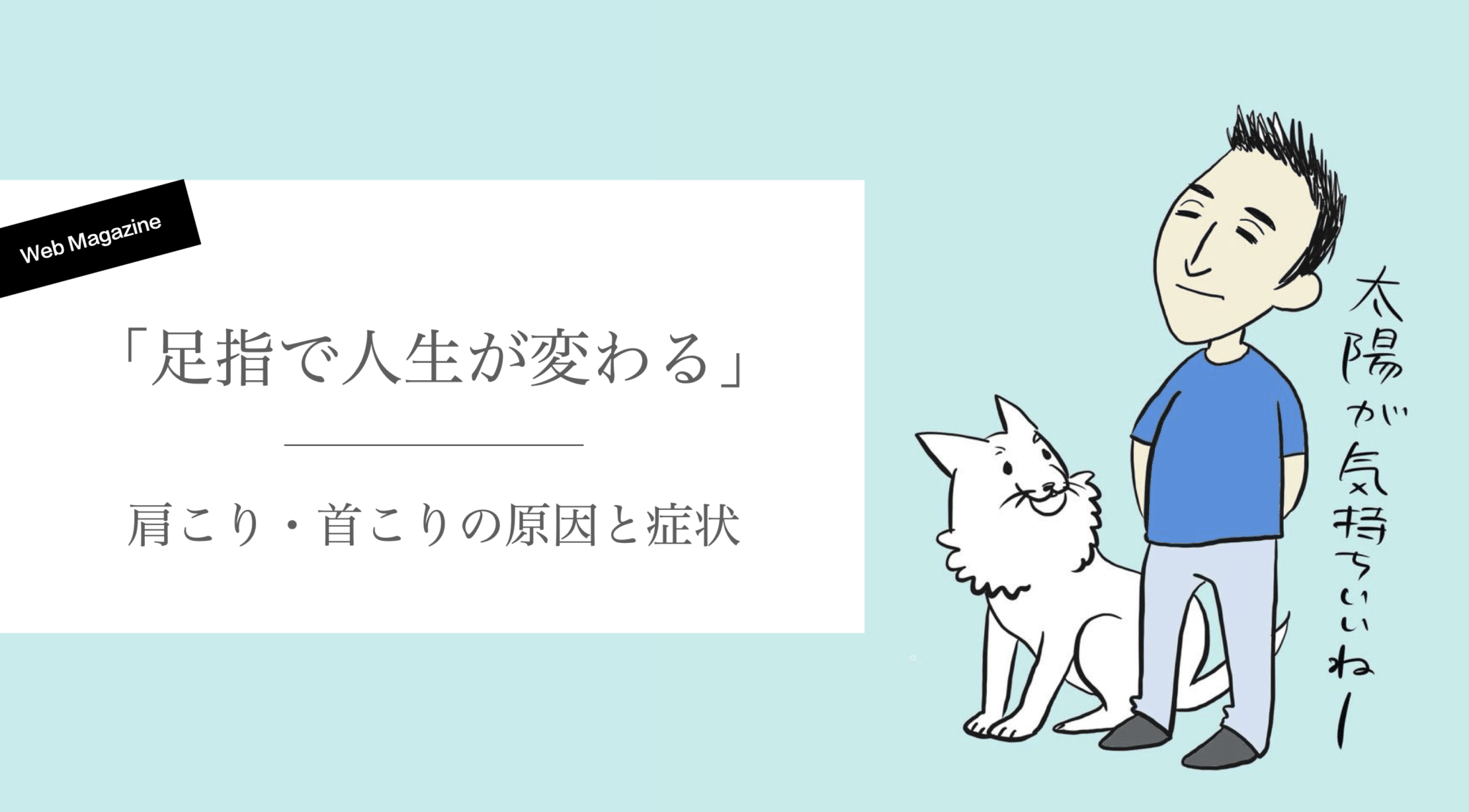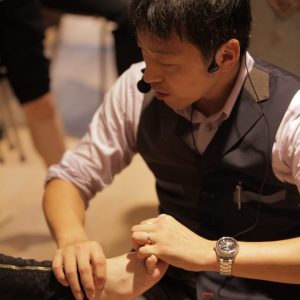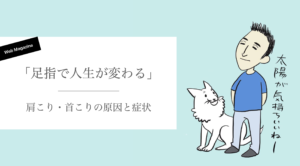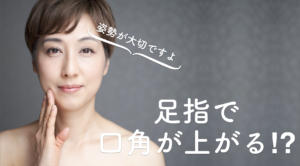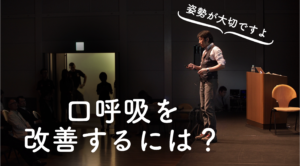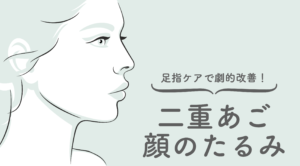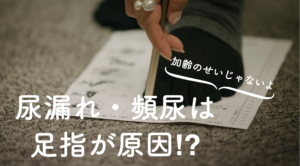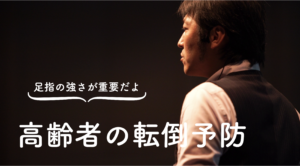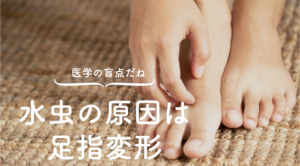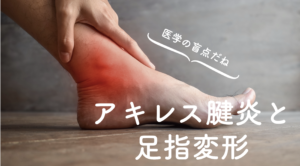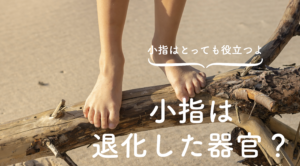Commentary by a toe doctor
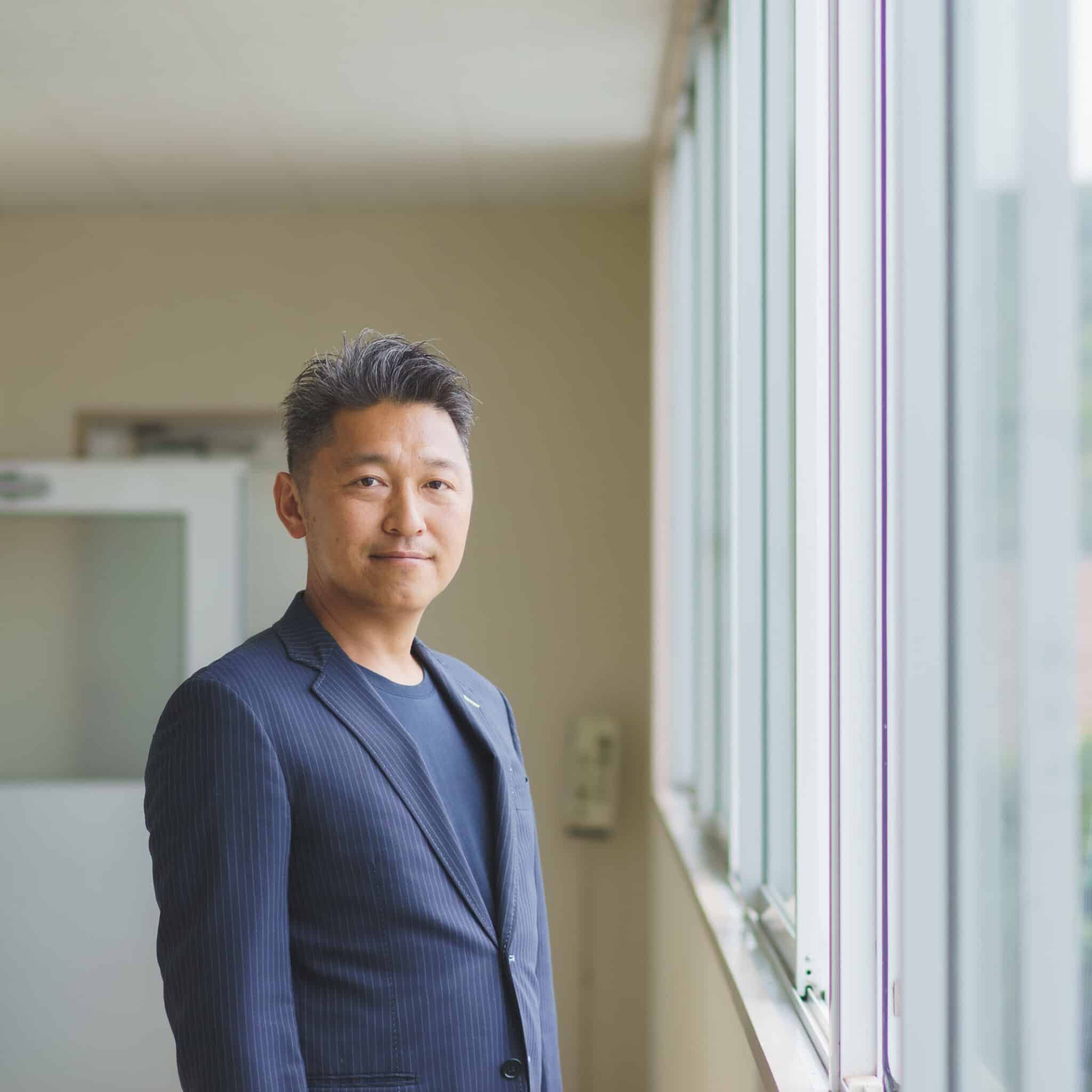
YOSHIRO YUASA
Keiro Yuasa
Dr. Toe, Director of Toe Research Institute, President of Japanese Society of Functional Foot and Toe Therapy, and developer of Halmek shoes. Former director, vice president, and medical director of General Hospital. He specializes in exercise physiology and anatomy. He is also a foot and shoe specialist and a leading expert in postural occlusion therapy. He has cured various orthopedic diseases (over 70,000 people) with toe therapy alone.
Introduction.
If you suffer from stiff shoulders and neck, check your posture first! Why posture?Since stiff shoulders and stiff necks are not caused by the shoulders, warming up the body, breathing exercises, moderate exercise, and shoulder blade exfoliation are only "stopgap measures.. And even if you are conscious of your head, neck, chin, chest, etc. to create correct posture, it is almost ineffective because you are in the original posture when you are unconscious. Since muscle training of the whole body also does not help to maintain a beautiful posture, few people have been able to eliminate the problems of stiff shoulders and stiff necks.
As a way to fundamentally relieve painful stiff shoulders and stiff necks, let's review "toe deformities. Toe deformity shifts the body's center of gravity and creates a distortion of the body. A distorted body causes tension in the muscles and fascia (tissue covering skin, muscles, organs, blood vessels, bones, etc.) around the shoulder blades. Therefore, moving the shoulder blade or relaxing it with massage may temporarily relieve symptoms, but it will not lead to a fundamental solution.
summary
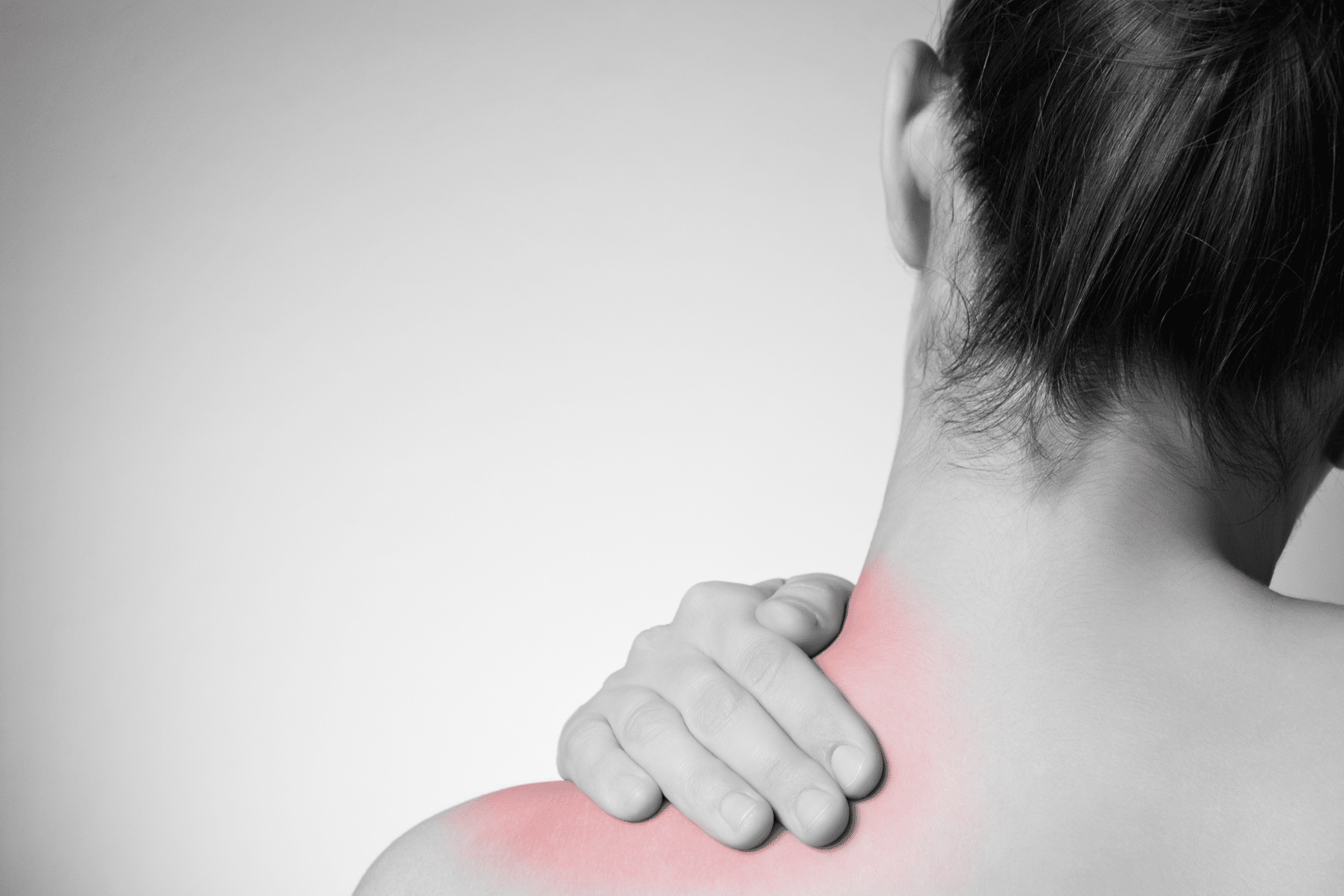
For humans to walk on two legs,Poor posture makes the body more prone to strain on the neck and lower back.. In a distorted posture, the muscles from the neck to the shoulders tense to maintain balance in a bad posture, blood circulation is reduced, and a feeling of heaviness is felt in the stiff shoulders and neck.
The main factors that cause stiff shoulders and neck are toe deformity and toe dysfunction, wrong shoe selection, wrong shoe wear, and sock typeand materials, among others. These factors, in conjunction with each other, cause muscle fatigue and poor circulation, leading to stiff shoulders.
symptoms
Tightness or pain in the neck, from the base of the neck to the shoulders or back.Headache, dizziness, nausea, difficulty concentrating, tired eyes, fatigue, pain and numbness in shoulders, arms, and even fingertipsmay appear. As the stiffness in the shoulders and neck progresses, you will also feel a stiffness from the shoulder blades to the back, as if a sheet of steel were attached to the back.
Causes and pathogenesis
arisorrhea
More than 90% have muscle problems around the shoulder due to poor postureIt is. There are other causes besides stiff shoulders and neck due to poor posture, but in 24 years of seeing more than 100,000 patients, I could count on one hand the number of those with the following causes, so most of you do not need to worry about them. We do not recommend that you go to a hospital because they will take X-rays or MRIs and give you a name for the disease based on some imaging abnormality.Abnormalities that appear on examination are not necessarily the root cause of the pain.You need to know that.
1. Osteoarthritis
Cartilage is the smooth, cushioning tissue that covers the ends of bones that join at joints. Healthy cartilage helps joints move smoothly. Over time, cartilage wears away or is damaged by injury or accident,osteoarthritisand may lead to the onset of shoulder pain.
2. Inflammation of shoulder joint capsule
The synovium of the shoulder can become inflamed. This is called "synovitis. Synovitis can occur as a result of rheumatoid arthritis or other conditions, as a result of injury, or for unknown causes. Fifty shoulder ("adhesive bursitis") is a condition that occurs when the bursa of the shoulder joint becomes thickened, inflamed, and stiff. There may also be less synovial fluid to lubricate the joint. This results in difficulty moving the shoulder.
3. Inflammation of bursa
Pain associated with inflammation of the bursa is also common in the shoulder. The bursa is a small fluid-filled sac that reduces friction between bones, muscles, and tendons. In the shoulder, the bursa between the rotator cuff tendon and the acromion (acromion) can become inflamed due to repetitive motion.
4. Injury
Ligaments are soft tissues that connect bone to bone. They provide stability to the shoulder by keeping the bones in their natural position. When a ligament is damaged or otherwise compromised, short-term pain may occur. This may be the result of the humerus being partially displaced from the glenoid fossa (subluxation) or the humerus being completely displaced (dislocation). The flexible tissue that keeps the shoulder joint in place (the glenoid labrum) may tear. This is called a labral tear. This can be the result of injury (e.g., falling on an outstretched arm) or repetitive motion (cricket (game)(e.g., playing throwing sports, etc.) can occur as a result of a direct blow to the shoulder. A direct blow to the shoulder can dislocate the acromioclavicular joint ("AC joint"). This type of injury often occurs when a person participating in a contact sport, such as soccer, is struck in the shoulder. It can also be caused by a fall. The tendons and muscles that stabilize the shoulder and keep it in the correct position for shoulder and arm movement are called the rotator cuff tendons. Tearing of the rotator cuff tendons can occur as a result of injury (e.g., a fall or clavicle fracture) or as a result of aging.
mechanism
A simple explanation,(1) Type of shoes and how to wear them → (2) Toe deformity → (3) Heel center of gravity → (4) Hunchback → (5) Straight neck (head moved forward) → (6) Muscle fatigue and blood flow disorder around shoulders → (7) Stiff shoulders and neckThis is the mechanism that
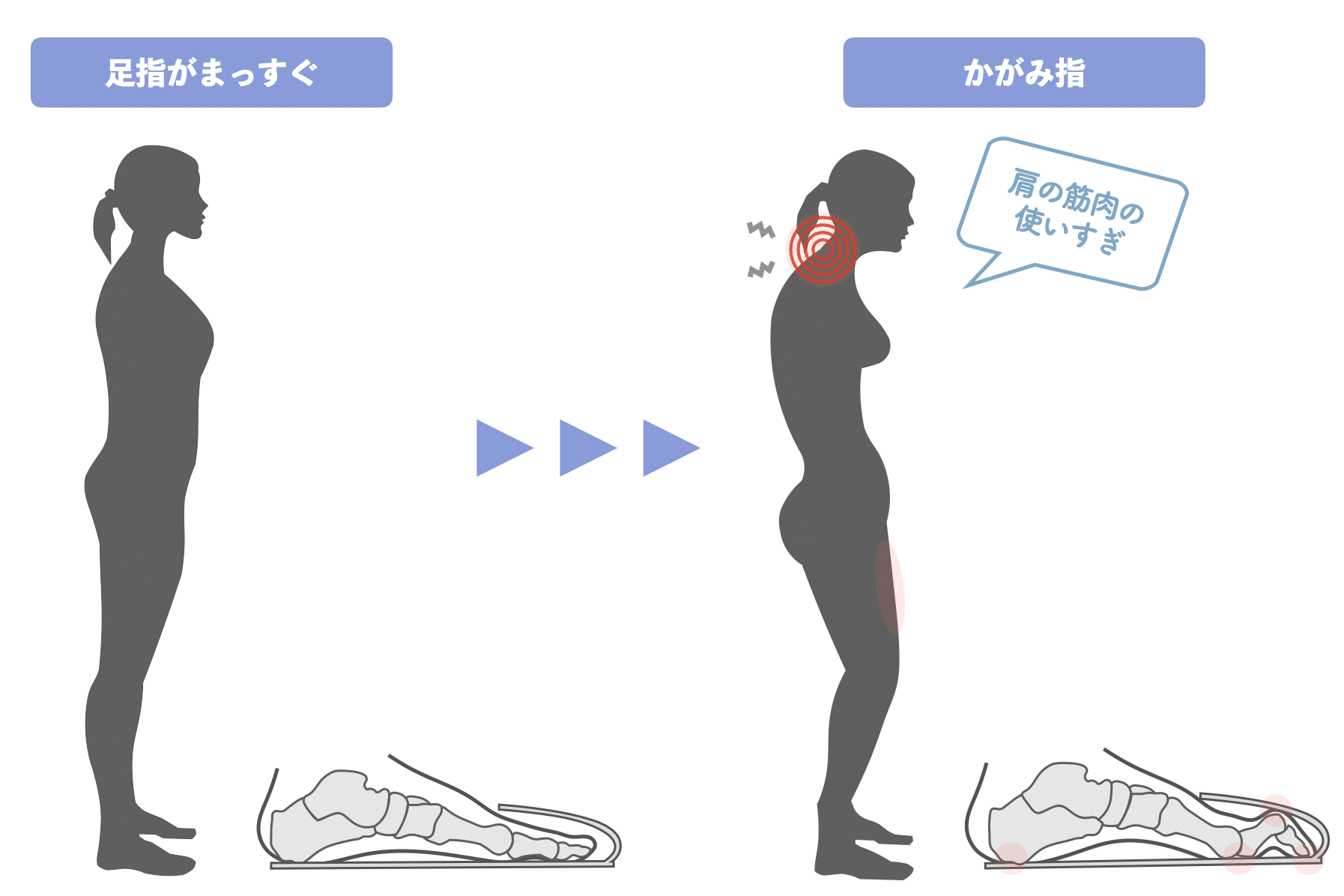
If the foot slips in the shoe due to the type of shoe or the way it is worn, it can result in a clawed or floating toe. When you have a clawed toe, your knee bends unconsciously because the brake is always applied when you walk. In addition, with a clawed or floating toe, the foot becomes "heel-weighted," so the foot tries to balance itself by bending the knees when it is about to fall backward.
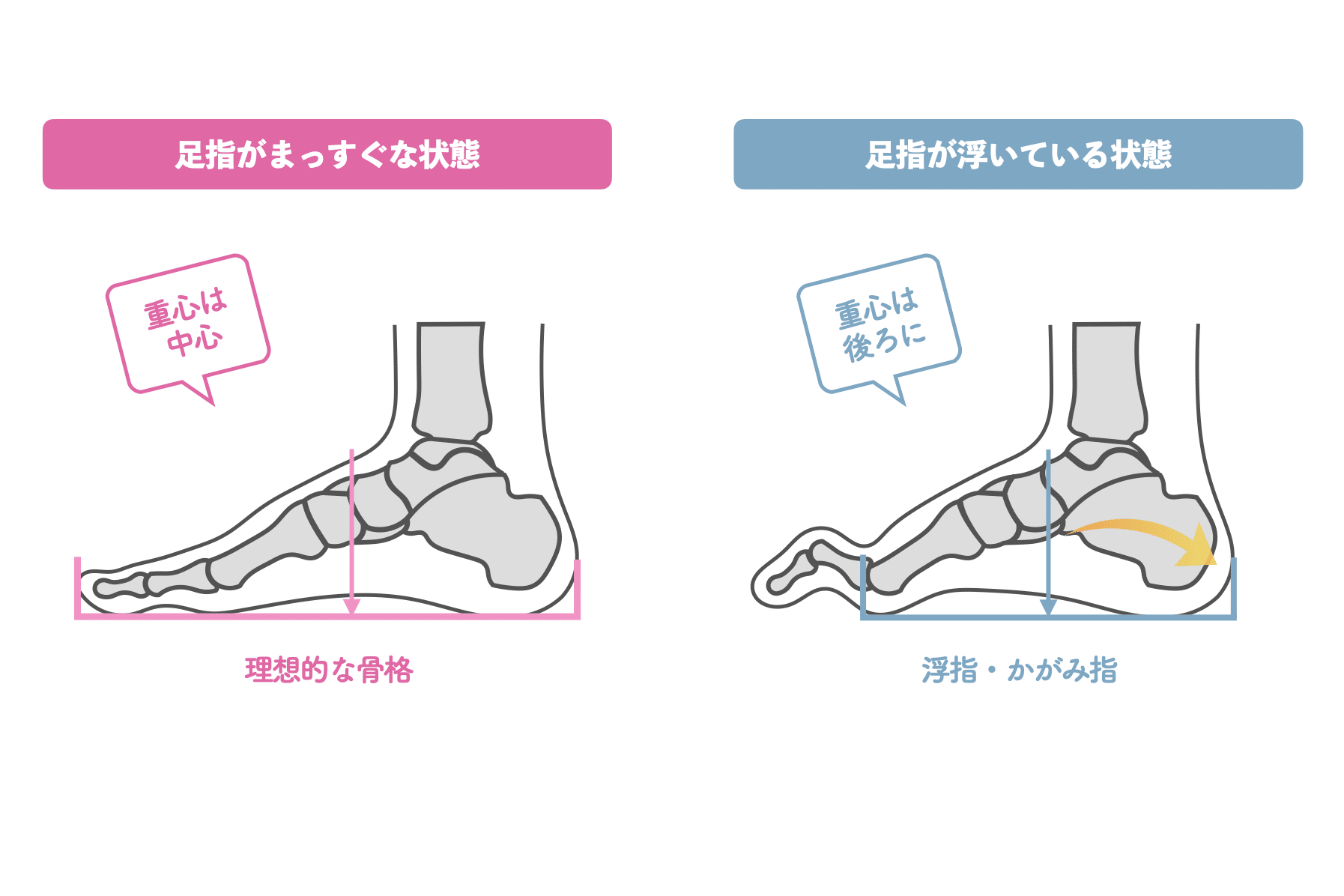
If the toes are well spread and extended, the ideal balance is 50% weight forward and 50% backward. However, with floating or bent toes, the ground contact area is reduced and weight is shifted to the heel.
This is the beginning of hunchback. When you hunch back, your head also moves forward in an attempt to balance your body. This is called cervical kyphosis or straight neck. When the head remains in a forward position, the muscles that support the head become overstretched, causing stiff shoulders and neck.
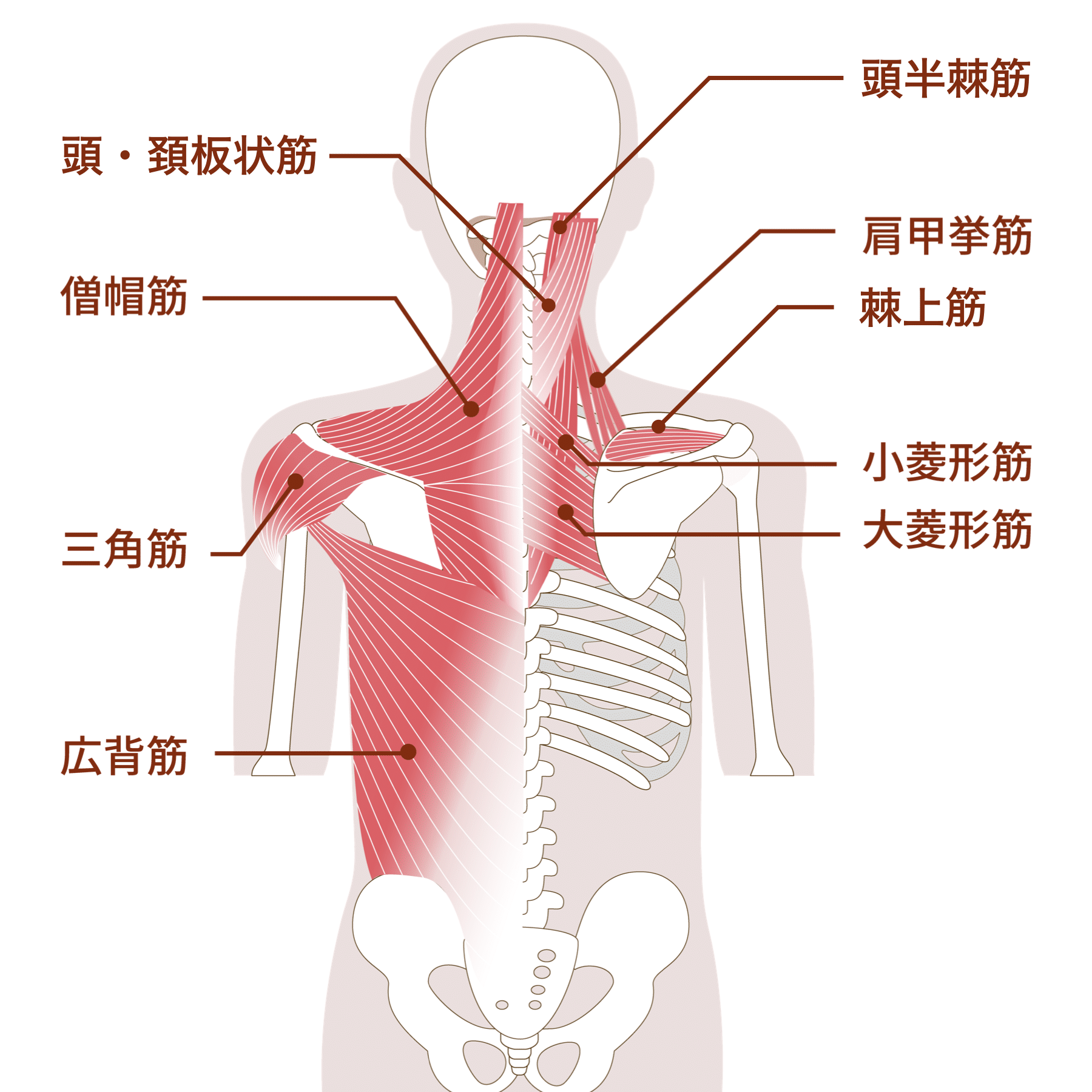
(1) Trapezius muscle
(2) cephalothoracic semispinalis muscle
(iii) Cephalothoracic and cervical platysma
(4) Scapular muscles
(5) Supraspinous muscle
(6) Rhomboid muscle (small rhomboid muscle)
(7) Rhomboid muscle (⑦)
Normally, when standing in the ideal posture, the muscles supporting the head are rarely used.An adult head weighs about 4-6 kg The muscles of the neck, shoulders, and back support this weight. The more the neck is tilted forward (cervical kyphosis or straight neck), the greater the load on the cervical vertebrae, which can be several times the weight of the head. The most severe posture can weigh up to 27 kg.
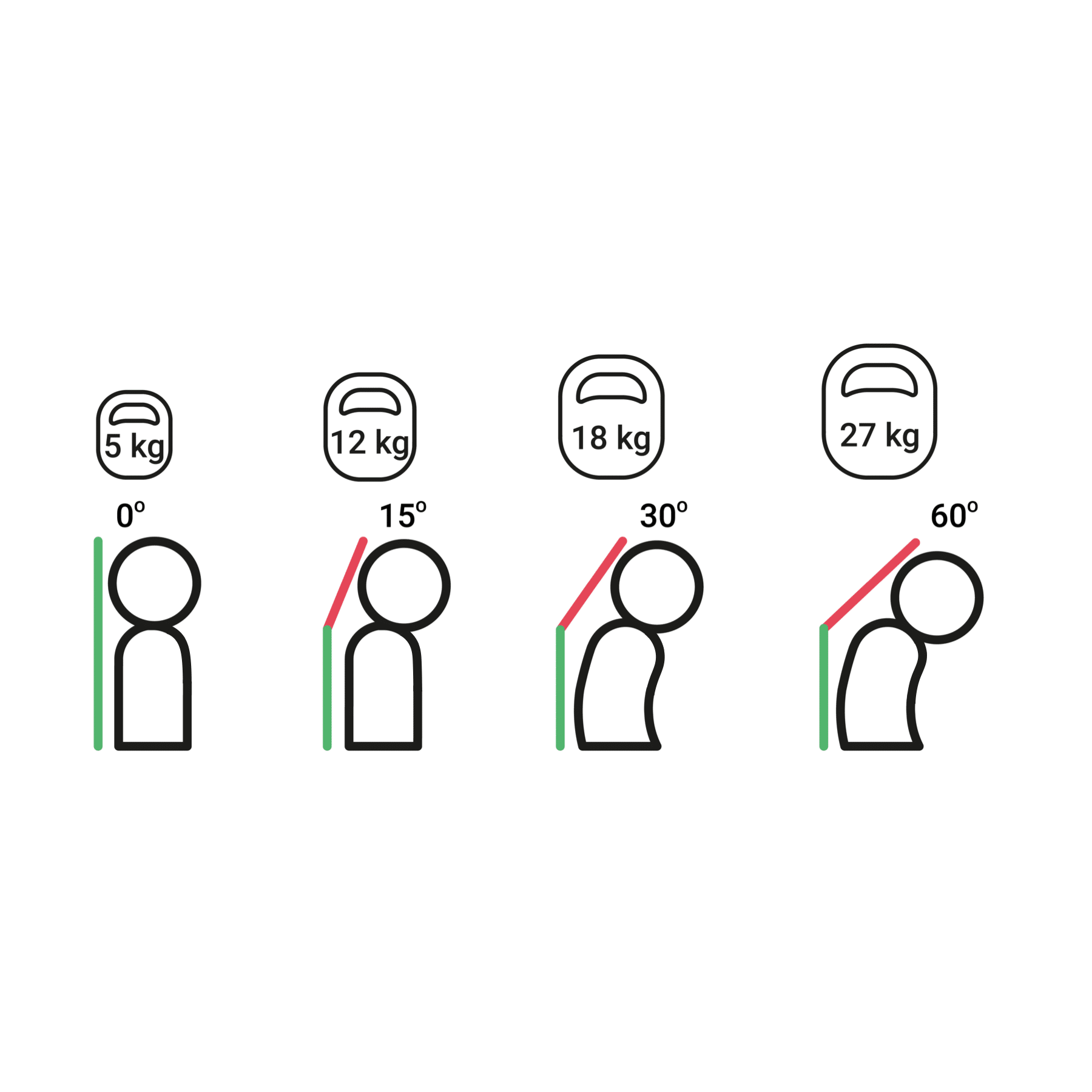
The head weighs about 10% of body weight for an adult. If the weight is 50 kg, it would be about 5 kg, and if the weight is 60 kg, it would be about 6 kg. And,If the neck is tilted at a 15 degree angle, the load is about twice as much, and if the neck is tilted at a 30 degree angle, the load is about three times as muchSince the muscles support that weight, it is natural for stiff shoulders and necks to occur.
If you have such a tilted neck posture on a daily basis, the strain is unimaginable. Have you seen how the hunchbacked posture puts a strain on the body? When the toes are firmly open and extended, a person can stand up straight. Therefore, they do not need as much muscle to support their head. However, most people have deformed toes due to the wrong choice of shoes, the way they wear them, the type and material of socks, etc., and the foundation of the toes has collapsed.
Still, you can balance your upper body and stand while exerting undue force on your neck and shoulders. However, because too much force is applied, the burden is placed on the muscles surrounding the knee, causing inflammation (i.e., stiffness and pain). Given this, don't you think it is the foundation that needs to be supported, rather than the area of the shoulder that is stiff?
In addition, how you wear your shoes can have a significant impact on your hunchback. Be especially careful if you wear the following types of shoes.
Wearing slippers, sandals, or slippers indoors.
...and wearing shoes with loose laces.
Shoes with soft soles and heel supports (heel counters)
Shoes with too much cushioning
Wide width shoes
Shoes with uneven insoles
Wear socks made of slippery materials (cotton or silk)
Shoes without heels or shoes with heels that easily come off will cause the feet to slip inside the shoes and unconsciously exert force on the toes to prevent the shoes from coming off. If this condition continues for a long period of time, the toes become deformed.
What causes deformed toes?
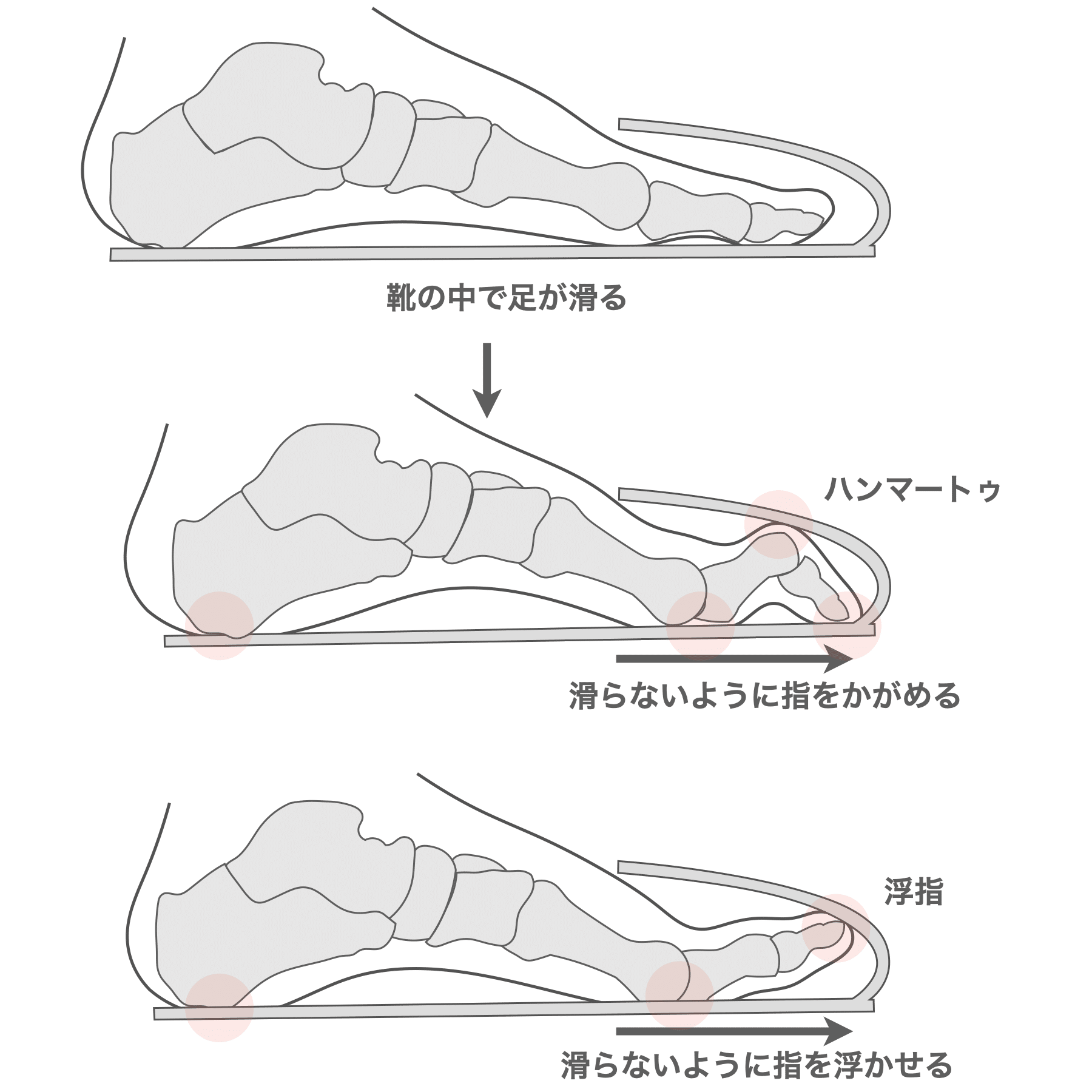
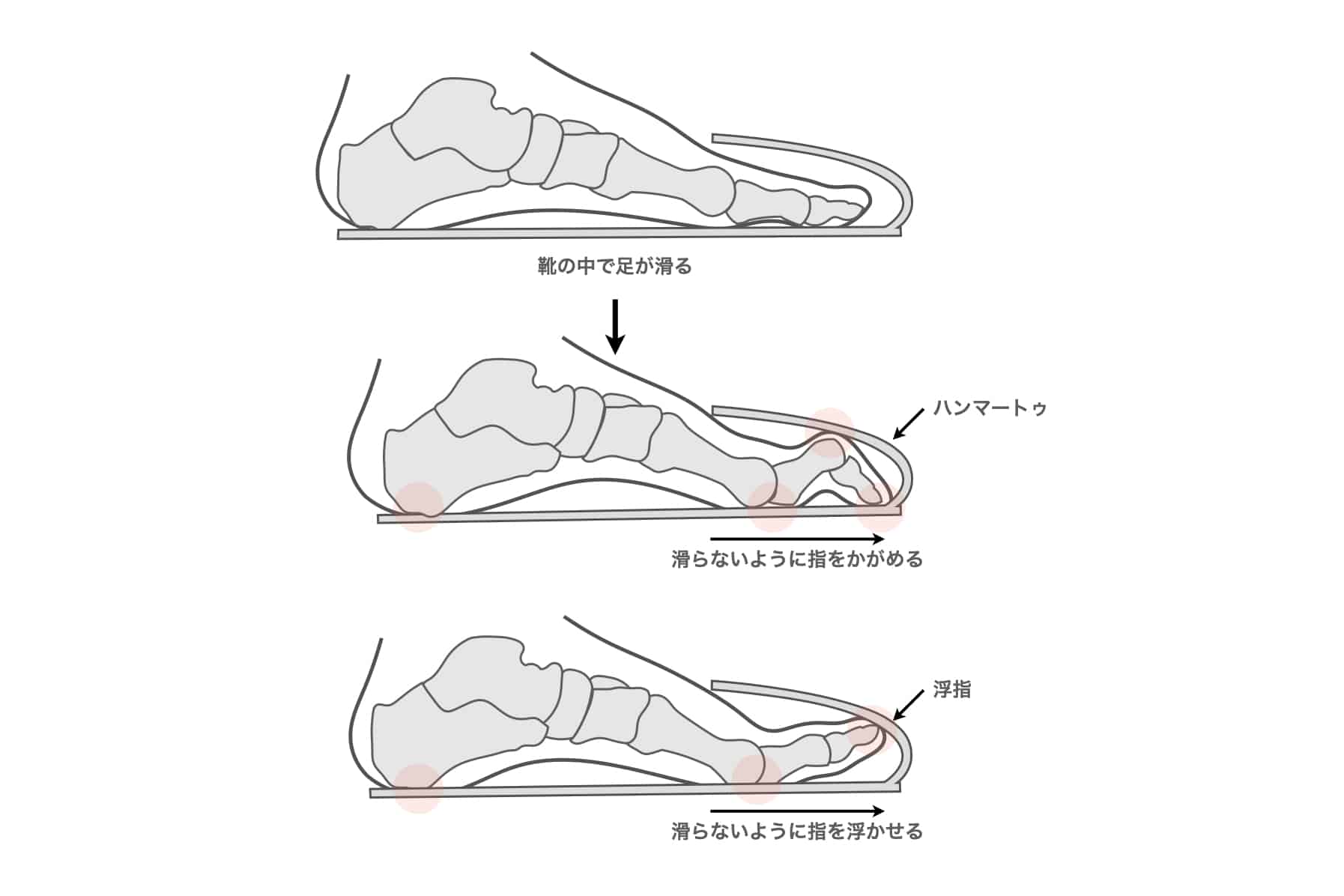
Most modern people have deformed toes due to the wrong choice of shoes and the way they wear them, and the foundation has collapsed. When the foot slips back and forth in shoes, the toes try to stop the slippage, resulting in hammertoes or floating toes. Socks and slippers can also cause the toes to bend.
In addition, the bones of the feet are supported and straightened by many muscles, but most of the muscles are attached to the toes. Therefore, walking without functional use of the toes causes deformities of the big toe and small toe due to loss of strength in the foot muscles. It is also not well known in medical science that a collapse of the arch leads to a heel center of gravity, which further contributes to poor posture such as hunchback.
In regular tubular socks (tube socks), which are worn by most people around the world, 4g~9gf/㎠ of force is applied to the toes, causing pressure on the toes. Also, many cotton and silk socks have a silken finish, which makes the feet slip easily in shoes and socks. Socks that slip easily and put pressure on the toes can cause toe dysfunction, leading to bent or floating toes. Conversely, fugly tube socks cause the feet to slide around in the socks, leading to clasped or floating toes.
While there are various medicines on the market to alleviate the pain of stiff shoulders and stiff necks, such as drinking pills, poultices, and ointments, it is important to approach the "toes" to correct posture in order to improve stiffness in the shoulders and neck. Although rehabilitation, massage, myofascial release, etc. performed in hospitals may temporarily relieve pain,Unless you treat the "toes" that make up your posture and the shape of your legs, you have nothing to show for it.You will find that
Inspection (Self-Check)
Diagnosis is made by interview and neurological examination, especially palpation to check for tenderness and muscle tension in the trapezius muscle, shoulder joint range of motion, and cervical spine disease. x-rays (x-rays) are taken, and if necessary, MRI, electromyography, and blood pressure measurement are also performed.
Although "stiff shoulders and stiff necks" as an accompanying symptom of cervical spine disease, intracranial disease, hypertension, eye disease, ear, nose, and throat disease, and shoulder joint disease are not uncommon,In most cases, it can be considered inflammation of the muscles surrounding the shoulderI think it is a good idea. Even if you have seen a hospital and have a diagnosed name, please try to fix your own posture first.Posture is also a factor in most cases of cervical spine diseaseThis occurs as a result of
Posture Self-Check
First, take a picture of your posture from right beside yourself with your phone or other device. Take the picture so that the center point of the phone is at the center of your body. It is a good idea to make sure that the leveler is positioned at your navel.

Next, connect the earlobes (earlobes) to the external ankles (outer ankles) of the feet with a line.The ideal posture is if (1) the center of the knee, (2) the greater trochanter (hip joint), and (3) the acromion (center of the shoulder) pass through that straight line.If you have trouble drawing a line, use a ruler to align the earlobe with the outer ankle. If you are not comfortable with drawing lines, use a ruler or similar tool to align the earlobes with the outer ankles.
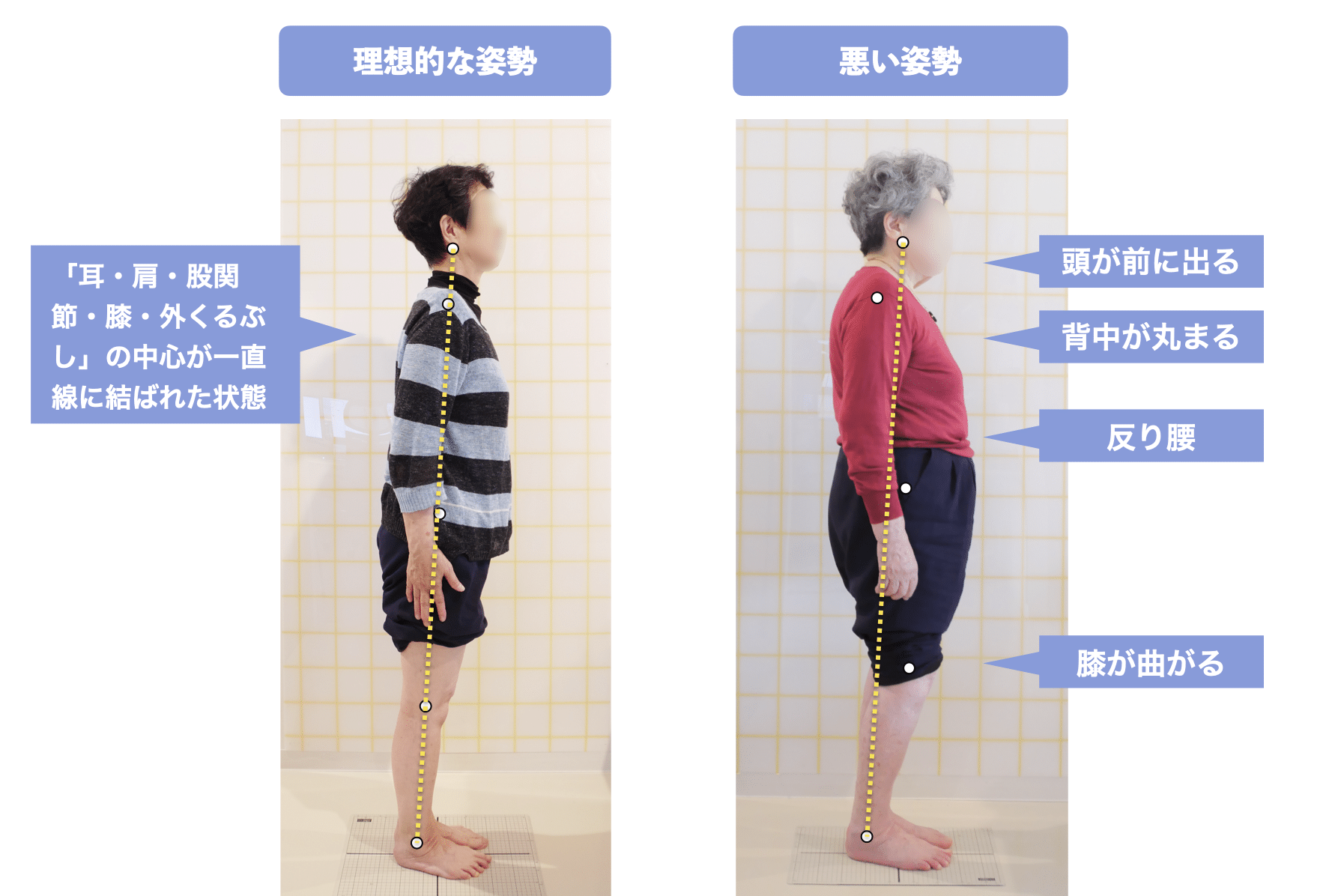
If either (1), (2) or (3) deviates from a straight line, hunchback or warped backand standing with the neck forward (except for some people with warped hips). How was it? In my clinical practice so far, less than 5% of people had the ideal posture, so most of you were probably hunchbacked.
Progression of straight neck
Next, let's take a picture from right beside you so that "face to shoulder" is included. Keep the face facing straight ahead and stand in a natural position. Or you can enlarge the photo of the posture you just took.

Draw a line between your earlobe and the center of your shoulder. Measure how much it is tilted in relation to the vertical line.A cervical angle of 0° is normal, while a cervical angle of 15° or more is more likely to cause stiff shoulders and neck stiffness... If you want to know the exact cervical spine angle, we can determine it from a full body photo, which we will show in the posture analysis article.
medical treatment
Hospital treatment is mainly based on "lifestyle guidance" in combination with "diet therapy," "exercise therapy," "physical therapy," and "drug therapy.
In both cases, the primary goal is to relieve pain, not to cure it, so although there is a temporary effect in relieving pain, it keeps recurring.Self-care foot stretching is recommended to fundamentally resolve stiff shoulders and stiff necks and prevent recurrence. In conjunction with this, it is also important to choose the right shoes and the right socks to prevent the feet from slipping in the shoes.
self-care
To relieve stiff shoulders and stiff neck caused by muscle fatigue and poor blood circulation, it is effective to correct the feet and regain the correct posture that is inherent to human beings. In particular, stiff shoulders and neck tend to be aggravated in people with poor shoulder blade movement; try to stretch your toes once a day.
To improve symptoms of stiff shoulders, it is important to relax the muscles around the legs. A recommended stretch to relieve stiff shoulders and neck is the "Hironoba Exercise. Although it is a toe exercise, it actually improves posture and softens the muscles around the shoulder blades naturally without having to relax them.
Hironoba Exercise, a toe stretching exercise that improves stiff shoulders and necks
Try doing this once a day for 5 minutes; if you do not see any change in your symptoms after 2-3 days, we recommend increasing the number of times to 2-3 times a day. The goal is to be able to do the toe par for 30 seconds.
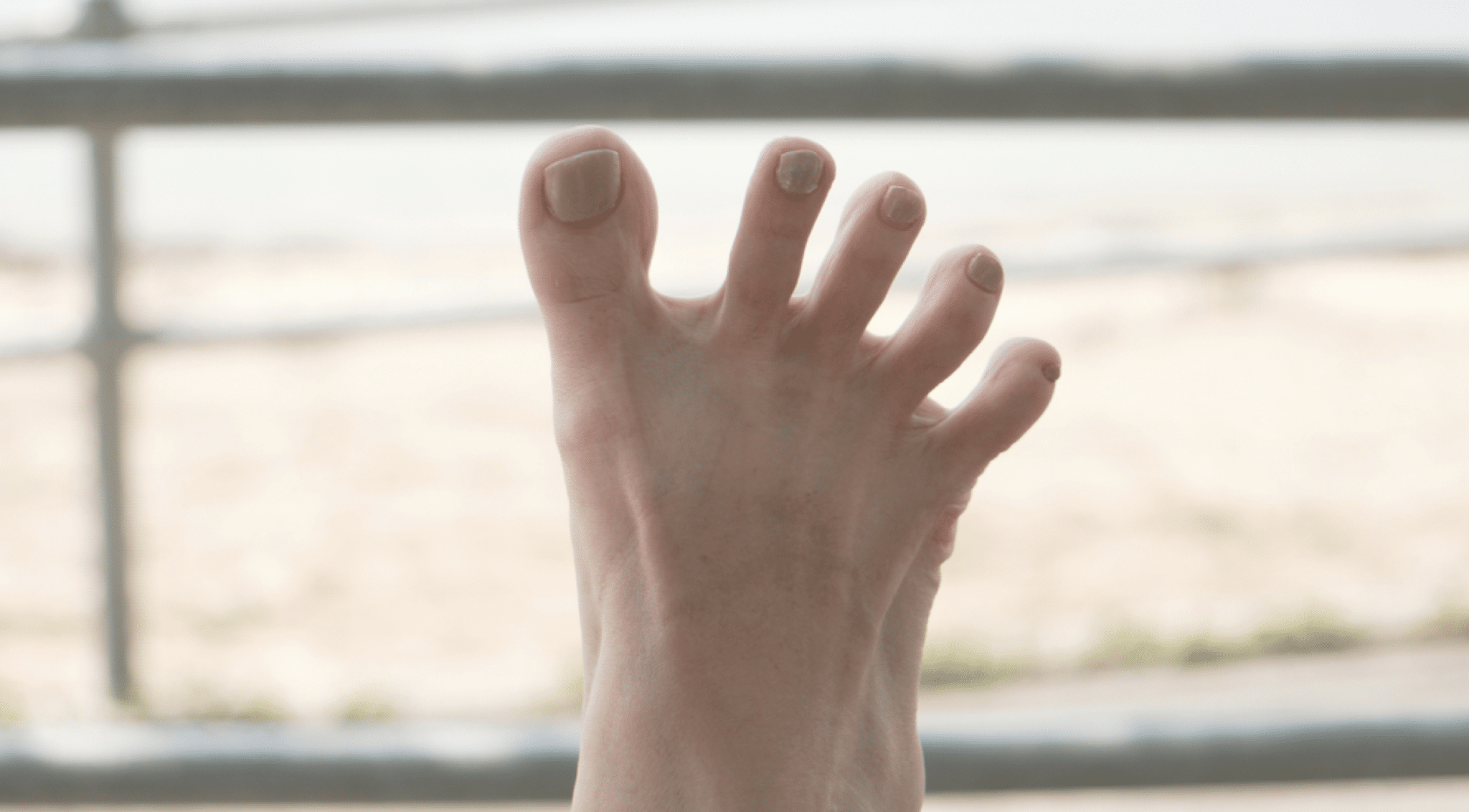
Corrective 5-finger socks for optimal posture support
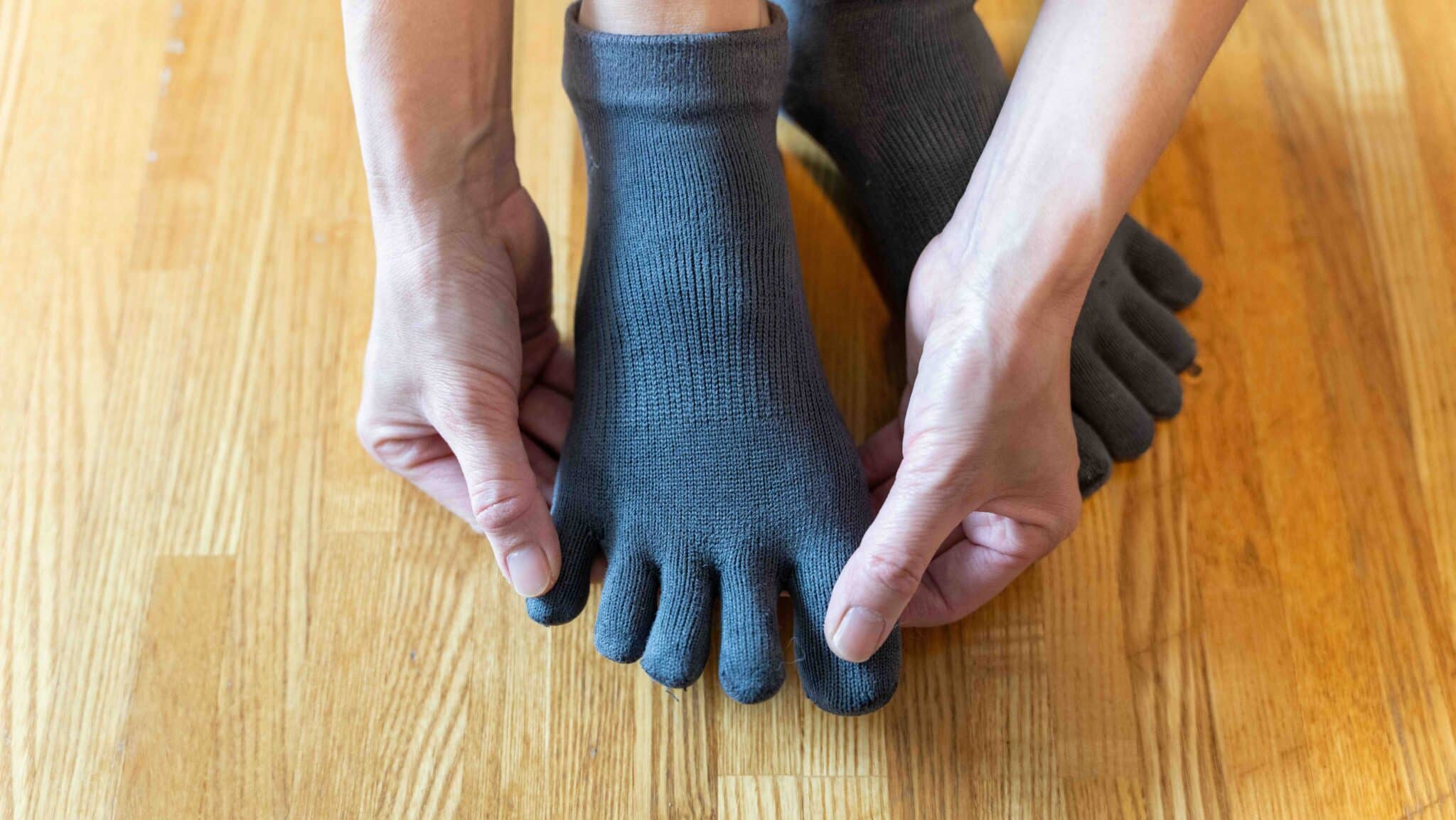
We have produced functional 5-finger socks made of cotton and silk and tried them on many patients in clinical settings, but we were unable to solve the problem of feet slipping in shoes and socks. Therefore, we spent two years working with a textile company to perfect the ideal fiber, and the corrective 5-toed socks "YOSHIRO SOCKS" were born. If you suffer from stiff shoulders and neck due to hunchback, give them a try.
To make it more effective
By making small changes in daily life, such as toe stretching and wearing corrective five-toed socks (YOSHIRO SOCKS), you can maintain correct posture and improve inflammation of the muscles around the shoulder.
Walk with a small gait.
∙ Activities that involve the use of toes, such as walking up hills and stairs
. Avoid wearing footwear indoors.
Try to walk at least 6,000 steps a day.
Make sure the laces are tight.
...Avoid using ordered pillows and mats.
Choose the right shoes.
Use a shoehorn to put on your shoes.
Stretching the toes and walking with corrective five-toed socks (YOSHIRO SOCKS) helps to use the toes functionally.(1) Toe deformity improved → (2) Correct center of gravity position → (3) Improved posture → (4) Straight neck improved → (5) Stiff shoulders and neck relievedThis is the process. You will no longer have to worry about stiff shoulders and neck, and you will be able to be more active.
prevention
Don't stay in the same position for too long
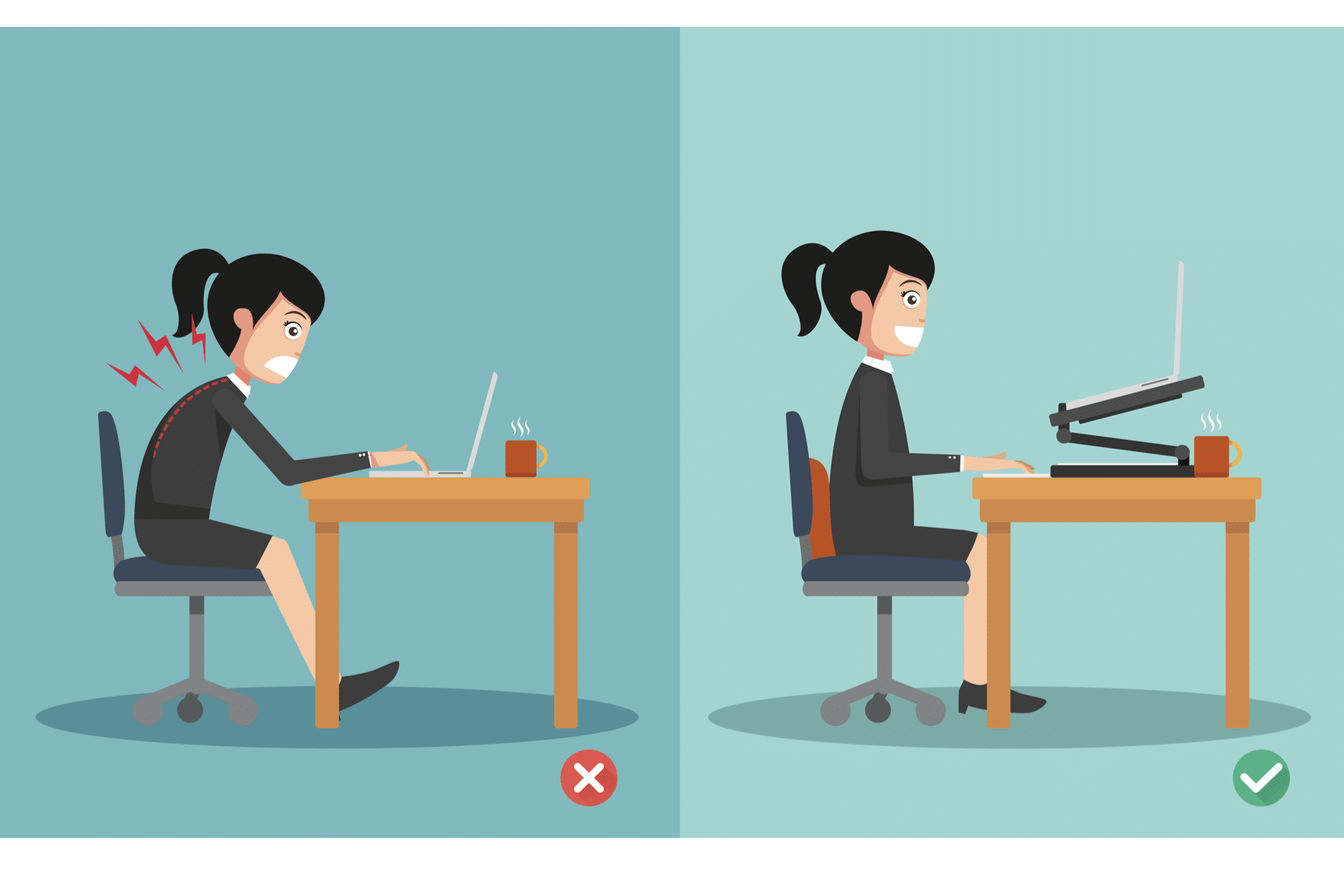
When concentrating on work at a desk, it is easy to spend long hours in a posture that puts strain on the muscles around the shoulders with the head forward. Try to move your body at least once every 30 minutes or so. Changing to an ergonomic chair and being aware of the position of your monitor can also help reduce stiff shoulders and neck stiffness.
rest one's eyes
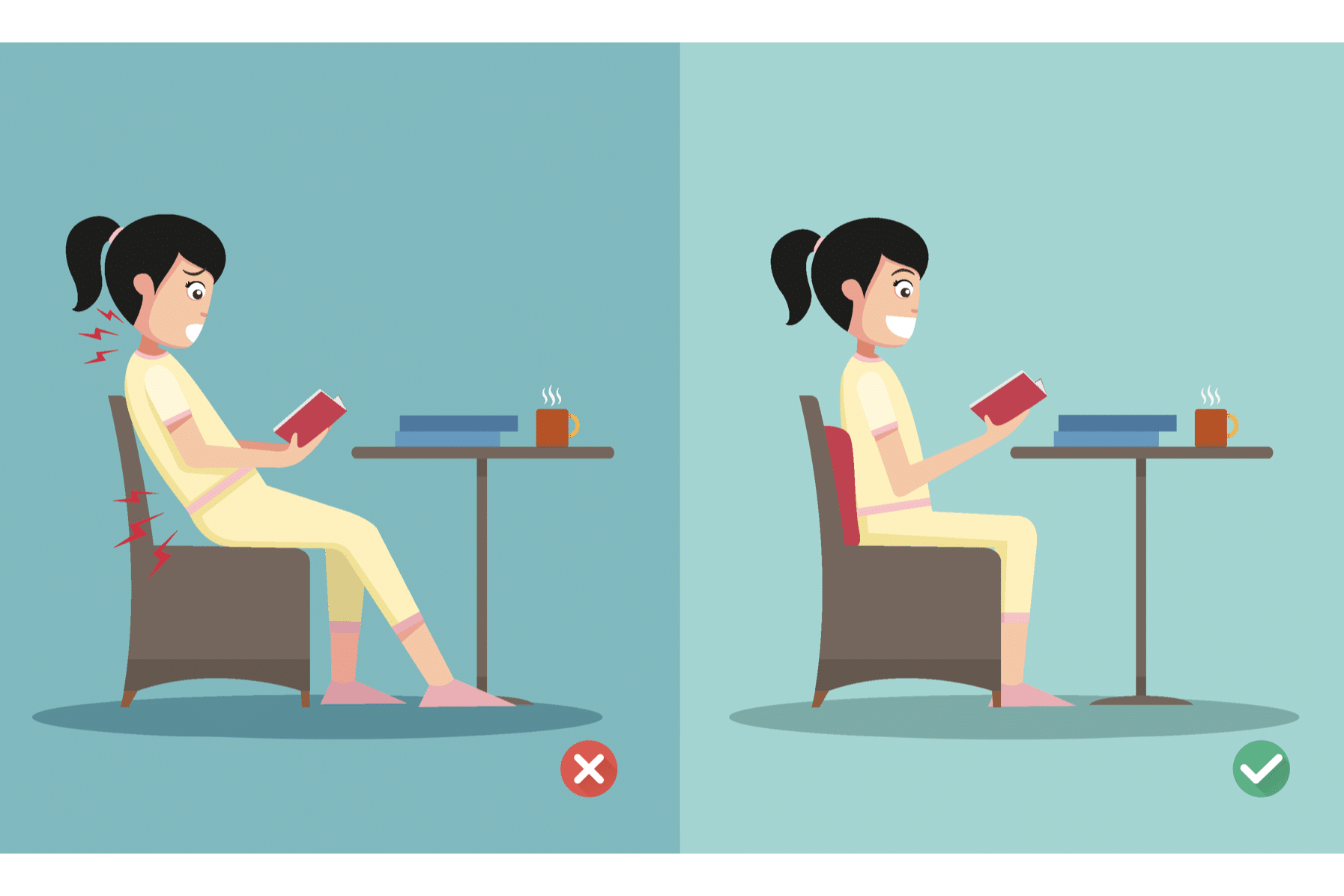
Prolonged reading, computer and smartphone use can cause not only stiff shoulders and neck, but also headaches, fatigue, and other ailments. Be sure to rest your eyes in moderation when performing tasks that place a strain on the eyes. If you feel your eyes are tired, it is a good idea to look into the distance or take up eye stretching exercises. Also, pay attention to the brightness of the room and your posture when reading, using a computer, or using a smartphone.
Moderate exercise and calisthenics.
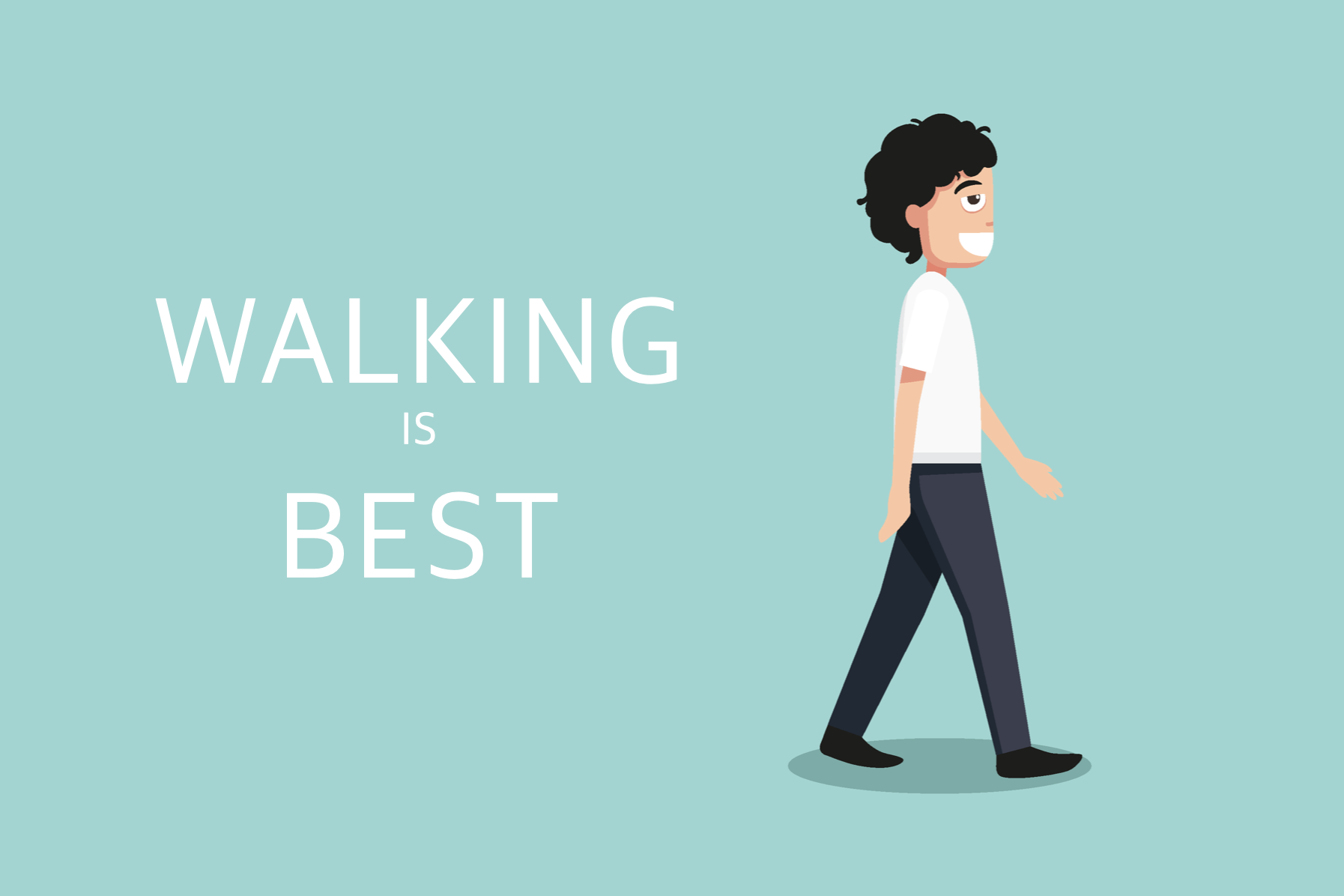
Correct posture is created by correct muscles.Correct muscles can only be built by walking with "toes spread and extended"!The goal is to walk at least 6,000 steps per day. Aim for 10,000 steps per day. You will notice that your blood circulation will improve and your stiff shoulders and neck will gradually disappear when you walk.
stress-free
The first and most difficult problem is stress. Continued stress and tension can disturb the balance of the autonomic nervous system, causing stiff shoulders and neck. Even if you say relax, you are not relaxing in your subconscious mind, so I recommend "cleaning up your room" as a stress-relieving method that can be practiced immediately. Reading books by Kazuto Saito may also be a good idea. Please give it a try.
How to choose the right shoes
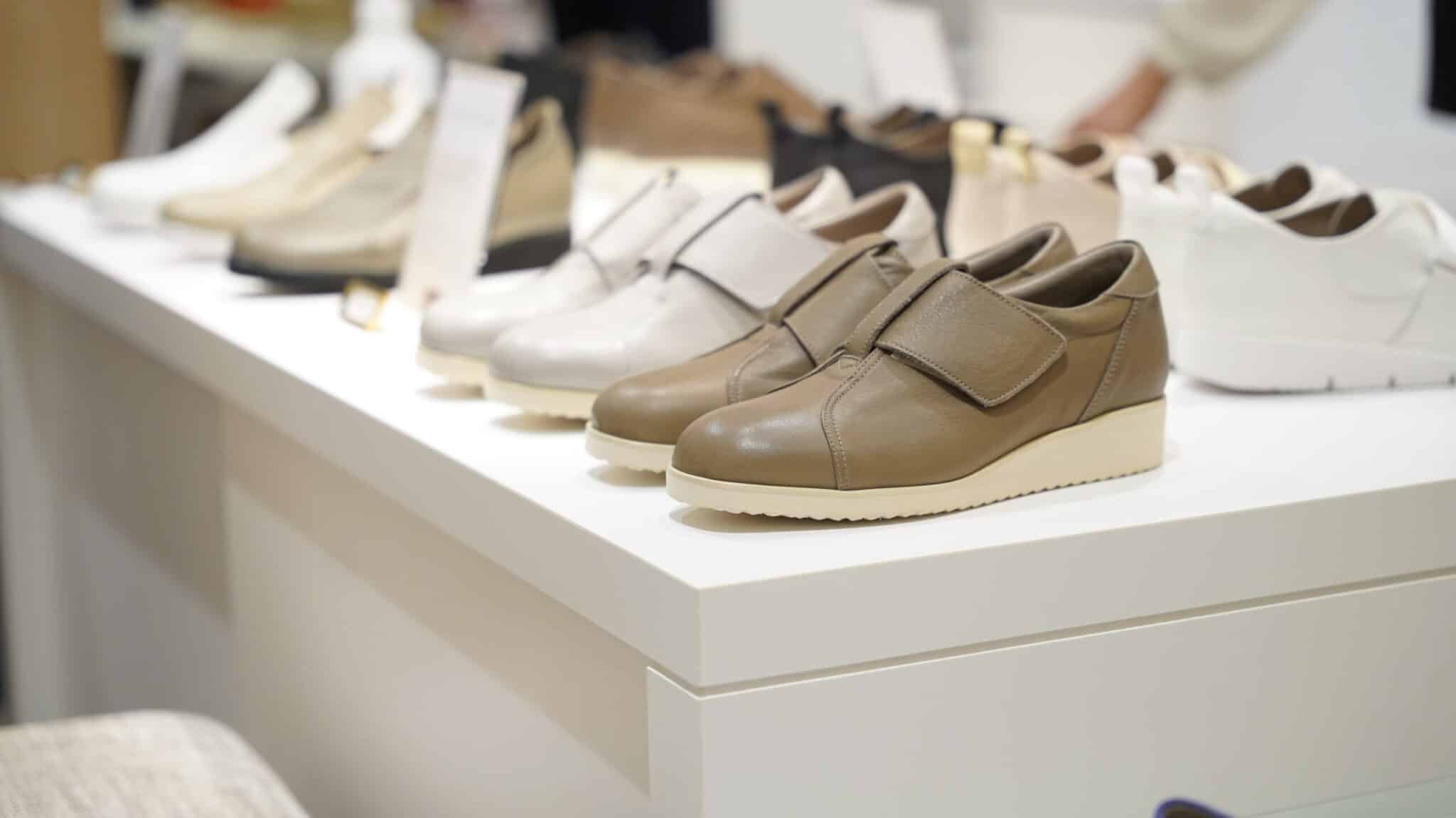
The most common cause of toe deformity is the choice of shoes and how they are worn.Many problems such as stiff shoulders and stiff necks are caused by not using the toes properly. Few people would think that because the feet and the head are located so far apart, they are not connected. If you are suffering from stiff shoulders and neck, please take this opportunity to review your feet.
How to choose the right socks
Pure cotton and silk materials are slippery
There is a silken finish (or mercerization process). Silkette treatment is a process that gives silk-like luster to yarns, and involves soaking yarns in a caustic soda (sodium hydroxide) solution and stretching them like hand-pulled udon noodles to straighten the cross section of the yarns. It is overwhelmingly used mainly for cotton and silk fibers (cotton).
The cross-section of the cotton is aligned, coloration is improved, and fluff is suppressed when processed, giving it a luxurious appearance. It is smooth and slippery to wear, but as the words "smooth" and "slippery" suggest, it is easy for the feet to slip inside shoes and socks. In other words, it is a material that can easily cause deformation of the toes.
Of course, there are cotton and silk materials that are not silken, so choosing such materials is also an important factor in preventing knee pain.
Five-toed socks allow toes to function.
Common socks are also called tube socks, and most people around the world have this type of socks. It is a shape that has been used for many years, but the tube type makes it difficult to use the toes properly. For this reason, socks with five separate toes are better, but there are many different types of this type.
The most important thing is to make sure it fits your own feet just right.The socks should be worn with a soft, comfortable, and comfortable footwear. If the fingertips or instep area is loose, even a good 5-finger sock will "slip". On the other hand, 5-finger socks that fit too tightly and feel oppressive are not recommended, as they can impede blood circulation. It is important to find 5-toed socks that feel "comfortable" when you try them on.
There are more and more socks with corrective power, but when I tried them, I found that many of them press down more strongly than I expected. Particularly in the area of the arch of the foot.Supporting the arch is important, but arch structure is a property that can lose its function if it is lifted too stronglySo, be sure to choose an arch that is also not too oppressive.
When you take it off, you say, "Ha, that feels good!" then the pressure is too strong.This is the case.
story of one's experience
Look at the picture below: a woman in her 60s thought she had good posture before doing the toe exercises. However, when I checked her posture, I found that she has a slouching back and her head is a little forward. She has been suffering from stiff shoulders and neck for many years.
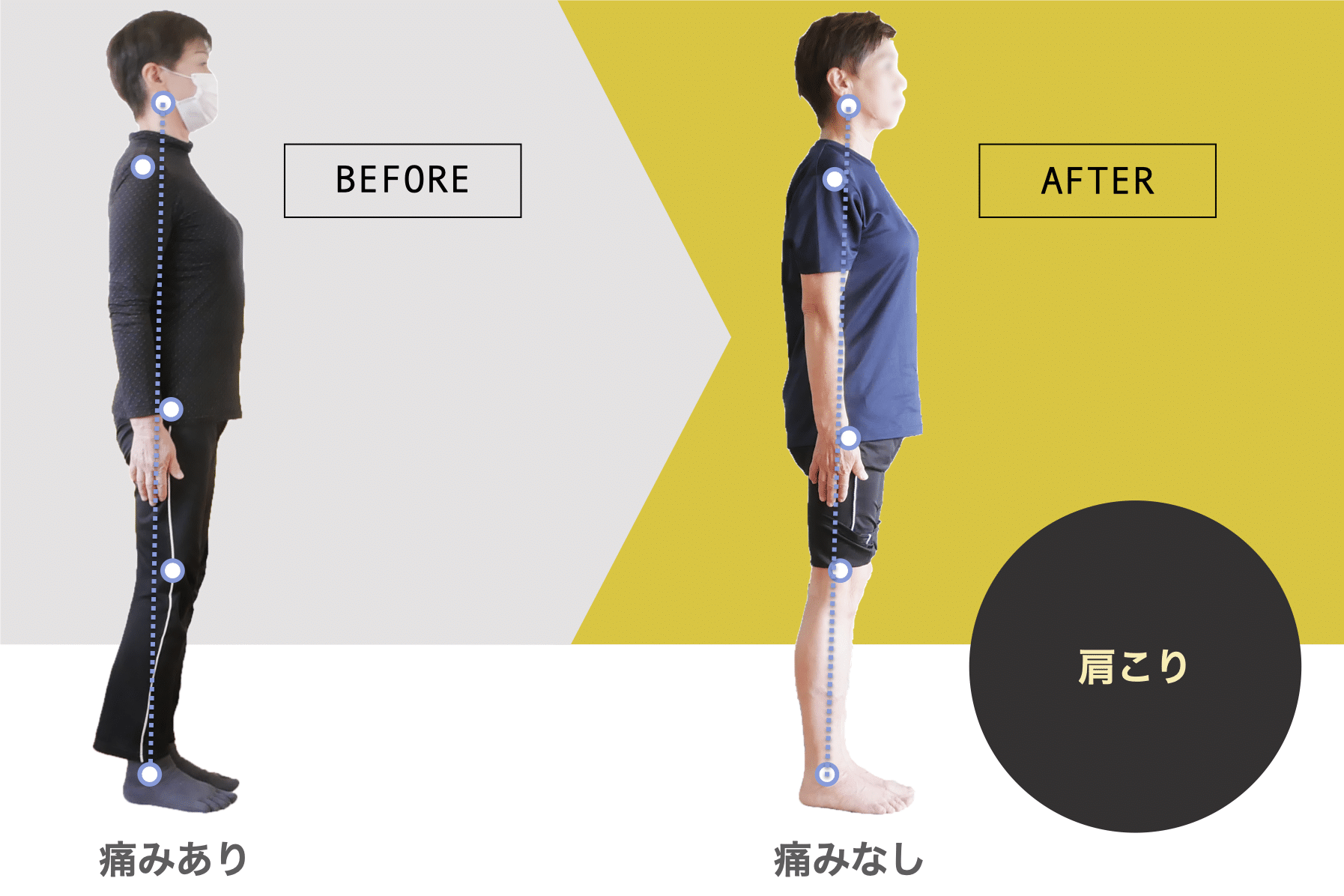
He learned for the first time that if his toes are not on the ground, his posture will be poor and he will have a stooped back. To improve posture, he said, it is important to stretch the toes firmly. It was difficult for him to get his patients to believe him, but when he saw them getting better, he decided to give it a try himself! He was not easily convinced, but when he saw his patients getting better, he decided to give it a try himself!
I also instructed him on how to wear shoes and taught him that it was not a good idea to wear footwear that he could just slip his feet into. So, I boldly threw away heel-less shoes at work and started wearing sneakers with laces that tie. Then we started "HIRONOBA EXERCISE" and "YOSHIRO SOCKS.
He had originally had shoulder surgery for a 50 shoulder. He said he worked hard at rehabilitation and his shoulder recovered to the point where he could lift his shoulder, but the stiffness in his shoulder and neck remained. He no longer uses compresses or massages.
Please start stretching your toes today.
References
Functional Anatomy and Physical Therapy of Hallux Valgus. Yuasa, Keiro. Physical Therapy Vol.31 No.2 2014.2 P159-165
2. "Shift Your Toes and You'll Be Healthy" by Keiro Yuasa/author, PHP Kenkyujo, 2014.6
3. "Your back and hips will never get bent again in your life by grabbing your toes in just 5 minutes! Written by Keiro Yuasa, PHP Research Institute, 2021.6
4.Gill TJ. Shoulder diagnosis and decision-making. in: Miller MD, Thompson SR, eds. DeLee, Drez, & Miller's Orthopaedic Sports Medicine: Principles and Practice. 5th ed. Philadelphia, PA: Elsevier; 2020:chap 37.
5.Martin SD, Thornhill TS. Shoulder pain. in: Firestein GS, Budd RC, Gabriel SE, Koretzky GA, McInnes IB, O'Dell JR, eds. Firestein & Kelley 's Textbook of Rheumatology. 11th ed. Philadelphia, PA: Elsevier; 2021:chap 49.
